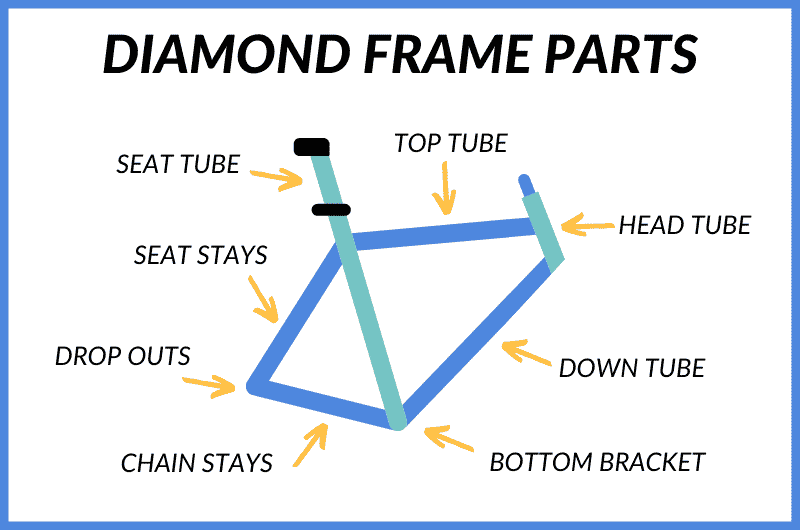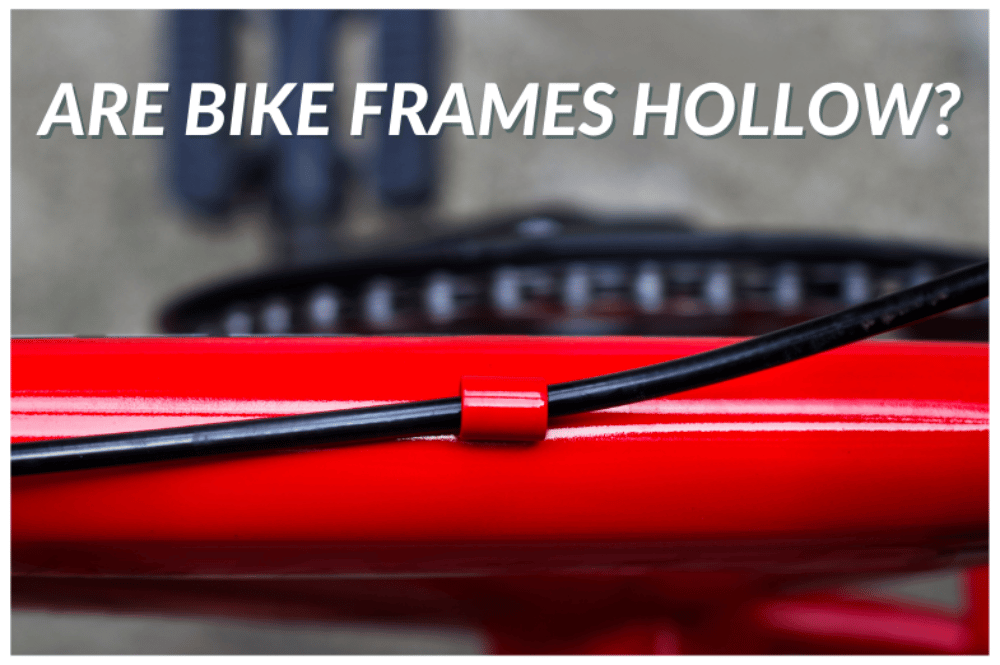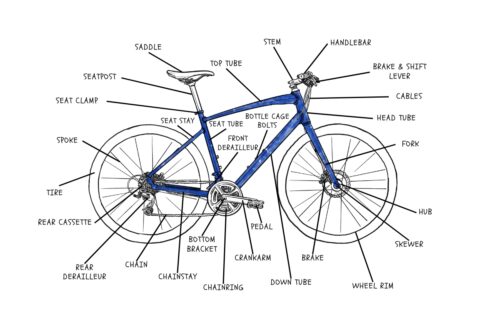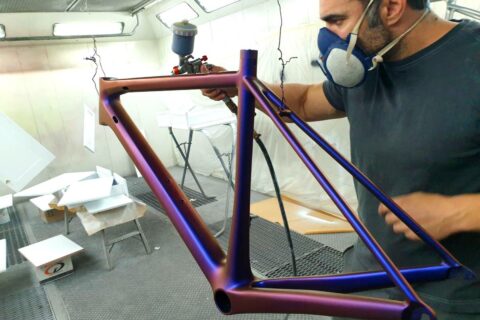This post may contain affiliate links, which help to keep Discerning Cyclist rolling. Learn more.
Bicycle frames are hollow thanks to the genius of design, the intelligence of science and the power of engineering. The iconic ‘double diamond’ frame shape hasn’t really changed in over 125 years. However, the components and materials used to manufacture frames have altered over time.
A key principle, however, is that a frame should retain as much of its original shape under load (frame stiffness) when you turn the pedals, corner, or brake. Different materials of frame design achieve this to differing degrees.
Other design principles are the frame’s ability to withstand crashes, and the frame’s resistance to repeated strain over time (frame fatigue). Designers, of course, also consider how the frame materials affect the comfort of your ride.
What Are Most Bike Frames Made Of?
Most bicycle frame tubes are made of a metal alloy. Aluminium is the dominant material used, overtaking steel, which ruled for a hundred years. This has happened mainly because of economics and engineering development. Carbon-fibre is reserved for more expensive machines.
Aluminium is the most cost-effective material for manufacturers, which still allows a frame to be stiff enough to help deliver as much of the rider’s power as it can for each pedal stroke. This ‘stiffness-to-weight’ ratio is an important criteria for most frame material design, and not reserved for Tour de France winners. Aluminium is lighter than steel too. It’s more prone to fatigue however, as it’s not as dense.

Steel frames have more toughness, pound for pound, than aluminium. Steel has a bit more ‘bounce’ than aluminium, which means a more comfortable ride. It’s easier to repair than other materials too, making it more crash-resistant. Industry insiders are becoming more aware of the importance of sustainability in cycling, and we look at that in more detail here.
Our beloved ‘Dutch bicycles’ are still mainly made of steel, as we see here. The weight of these is less important, with riders looking for a for a city commuter bicycle or lifestyle object.
Carbon-fibre design represents the current pinnacle of ‘stiffness-to-weight’ ratio. The material is extremely light. It’s usually manufactured in strips. In order to make it stiff, these strips are usually layered over one another in a special kind of grid or matrix and then glued. This tends to be done in mould and the frame is baked in a special oven.
Are Bike Frames Hollow?
Most bicycle frame tubes are hollow. If you were cycling in the mid-19th century you would have done so on a solid wooden frame. You can still buy a wooden-framed bicycle today, but they are specifically crafted with hollow frames using computer controlled drilling technology.
Why Are Bicycle Frames Hollow?
Solid bicycle frames are not needed because a hollow frame tube design is considered to be the best at resisting the factors which determine stiffness. It seems that the science tells us that if you take a solid rod and a tube, both of the same diameter, the tube will be stronger and lighter.
Frame tube width plays a role in increasing stiffness, particularly with aluminium. The thickness of the tube really helps strength where it is needed. A great example of this can be seen in a folding bicycle. The frame strength is compromised by the fold. Therefore the top tube – the one running from the seat post to the handlebar stem – is much thicker than the other frame tubes on the same bicycle.
Alloy tubes can be ‘butted’, meaning they are made thicker at the ends, where there is more tension. ‘Butting’ reduces frame fatigue. The metal will be thinner in other areas along the tube where less strength is needed and to save weight.
Frames do need to be strong, stiff and the lighter the better. Your budget is most likely to decide which of these factors is given the most attention. It’s reassuring to know that engineering and design have both played a part in making sure manufacturers get all they can out of each material.
Whilst the essence of a frame design is universal – the double diamond – it’s less clear for other components. We take a look at some non-standard components here and here.











